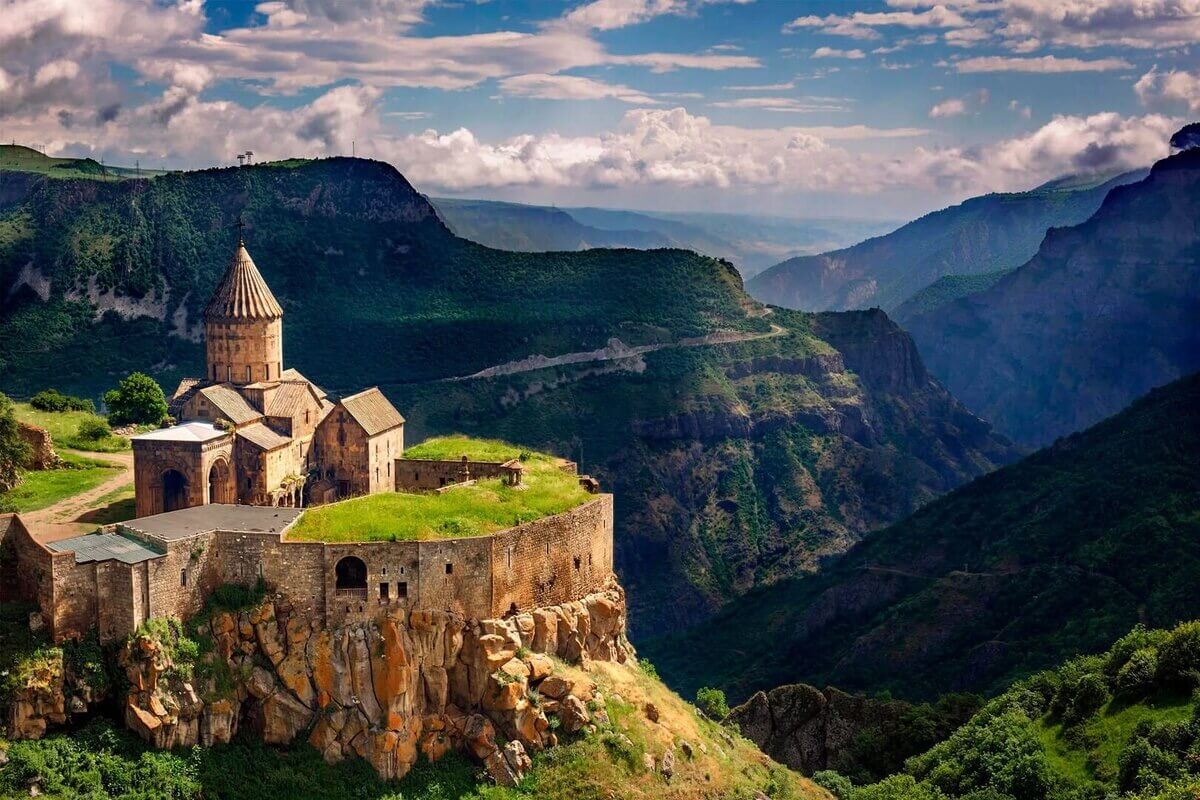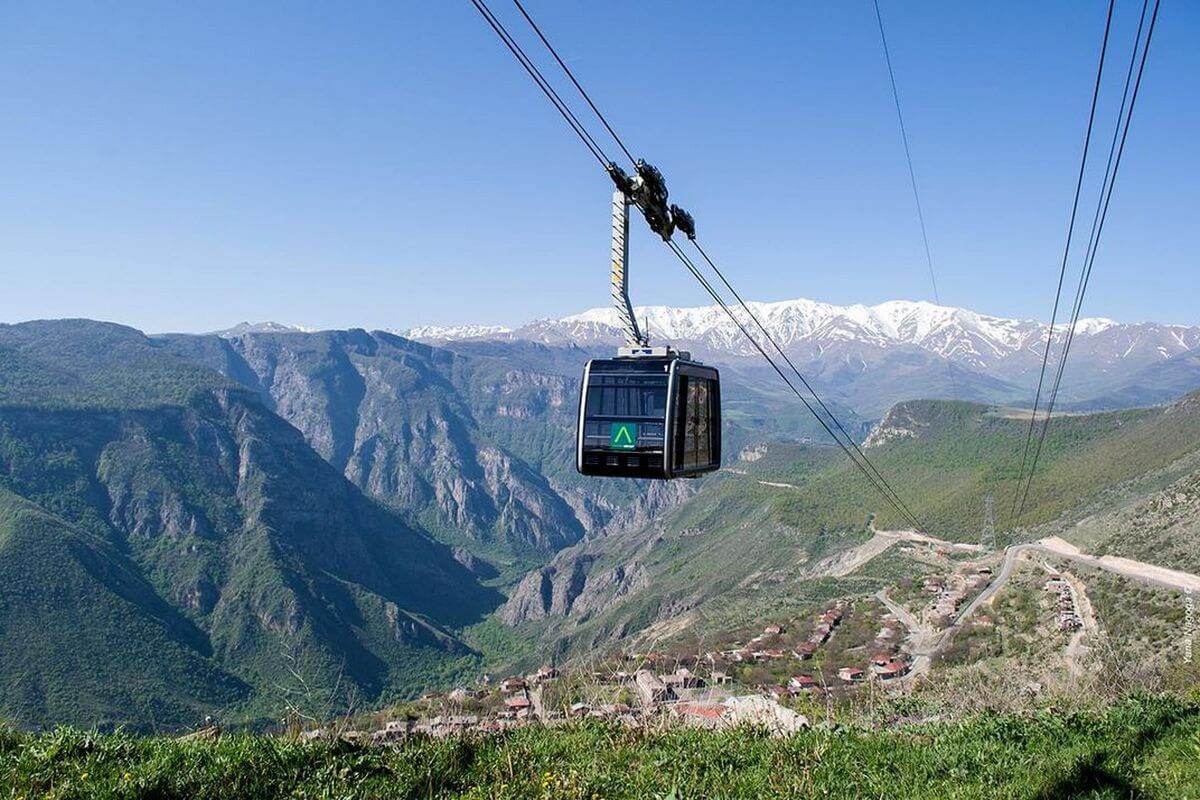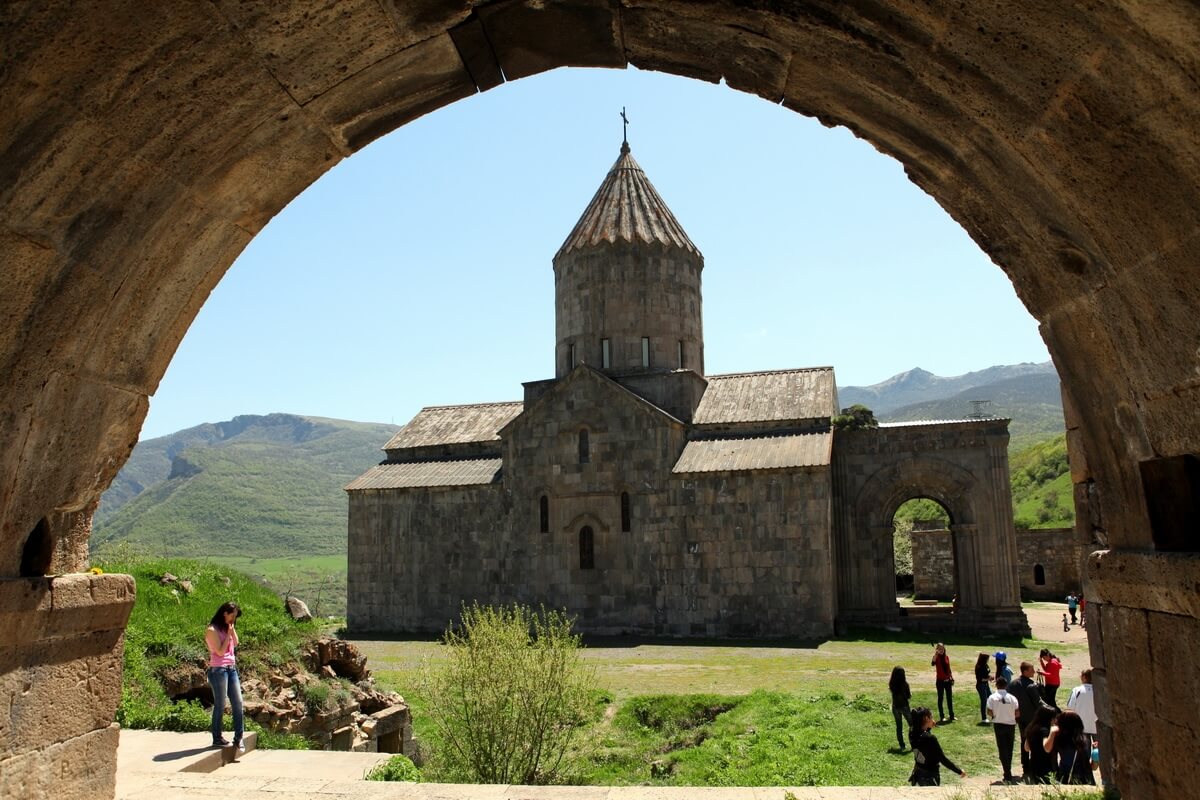Tatev Monastic Complex
One of the masterpieces of Medieval Armenian architecture – Tatev Monastic Complex, is situated near Tatev village of Syunik marz. It was the spiritual-cultural center of Syunik province of Greater Armenia. Being founded in the IV century, Tatev Monastic Complex was built gradually, generally at the end of the IX century and at the beginning of the X century and in the XVII-XVIII centuries.
CONTACT INFORMATION
VIRTUAL TOUR
3D Model
About Tatev Monastic Complex
Tatev Monastery was the leading educational center in the V-VIII centuries. It was the Bishopric seat of Syunik since the end of the VIII century and had 47 villages. Tatev Monastery had approximately 1000 monks and a great number of craftsmen in the XI century. Tatev Monastery was turned into ruins because of the invasions of the Seljuk Turks and during the earthquake. The Seljuk Turks robbed the Bishopric treasures of Tatev and burned more than 10000 manuscripts.
Tatev Monastery was renovated and strengthened at the end of the XIII century becoming an important center of the Armenian culture in the XIV century. School of miniature painting and writing, many different workshops and that time famous Tatev University were acting at the Monastic Complex. The Monastery had a big library, where thousands of valuable manuscripts were kept.
Tatev Monastery was robbed, burned again and lost the great part of its estate in the XIV-XV centuries during the Tatar-Mongolian invasions. Tatev Monastery prospered again at the second half of the XVII century and at the beginning of the XVIII century.
Being based on the cape of high rocks it had strategically benefit position, which promoted the formation of a powerful protective system there. It was an important foothold of the national – liberation struggle of the Armenian people against the foreign invaders in the 20s of the XVII and the XX centuries. Many remarkable occasions and traditions are contacted with it.
At the end of the XX century constructing and renovating works were done in the area of the Monastery. The Monastery is mostly renovated now and is the spiritual center of Syunik Diocese.
Three churches, the book house, the dining hall, the belfry, the mausoleum, household and auxiliary constructions are in the gated complex of Tatev. The olive press, water source, school etc. are out of its area.
St. Paul and Peter Church is the oldest and most important building of the complex, which was built in 895-906. It has basilica plan, central dome, which is leaning on two central columns. The exterior of the Church is strict and laconic. Being the spiritual center of Syunik Princes a special attention was paid to the interior decoration of St. Paul and Peter Church. In 930 the walls of the Cathedral were covered by rich wall frescoa, few of which are kept today. Jesus was painted in the central apse of the Cathedral sitting on the throne and surrounded by three apostles and four saints. The fragments of the great composition of Last Judgment are kept on the western wall, the fragments of the Nativity of Jesus are kept on the northern wall.
Surb Astvatsatsin – Holy Virgin mausoleum-church was built in the north-western part of Tatev Complex in 1087. St. Gregory Church, which according to bibliographic dates, was built in 1295 at the very place of the same name church built in 848 and destroyed during the earthquake, is situated to the south from the central Cathedral. The mausoleum of the Armenian great philosopher – Theologian Grigor Tatevatsi was built in front of the southern entrance of the Cathedral in 1787.
An original masterpiece of the Armenian architecture is the «Gavazan» – staff, built in the yard of Tatev Monastery in 906. The stick is an octagon column of 8 maters tall built of small stones, which is lined by an ornamented cornice in which a khachkar – cross stone is raised. Due to the skills of the Armenian architectures the column deviates by the seismic tremors and even by the simple touch of human hand and comes back to its preliminary position.
In the southern, western and northern sides of these main buildings many residential, auxiliary and household buildings: primacy, rooms for monks, reservoir, dining hall kitchen, bread keeping room, wine house were completely built in the XVII-XVIII centuries. The olive press consisting of 4 production rooms, built at the end of the XVIII century, is kept to the north-west from the gates of Tatev Monastery. The Bathhouse, built in the XVII century, is to the east from the olive press.
Tatev Monastic Complex is harmonious with the mountain landscape. The great Cathedral is the artistic-architectural center of the complex, which being higher among the surround buildings, is seen from far. Residential and auxiliary buildings, being spread all over the surface of the complex and emphasizing the multilateral nature of the rocky base with its inclusion, seem to be the natural continuation of the rock, which grant great originality and nobility to Tatev Complex.



